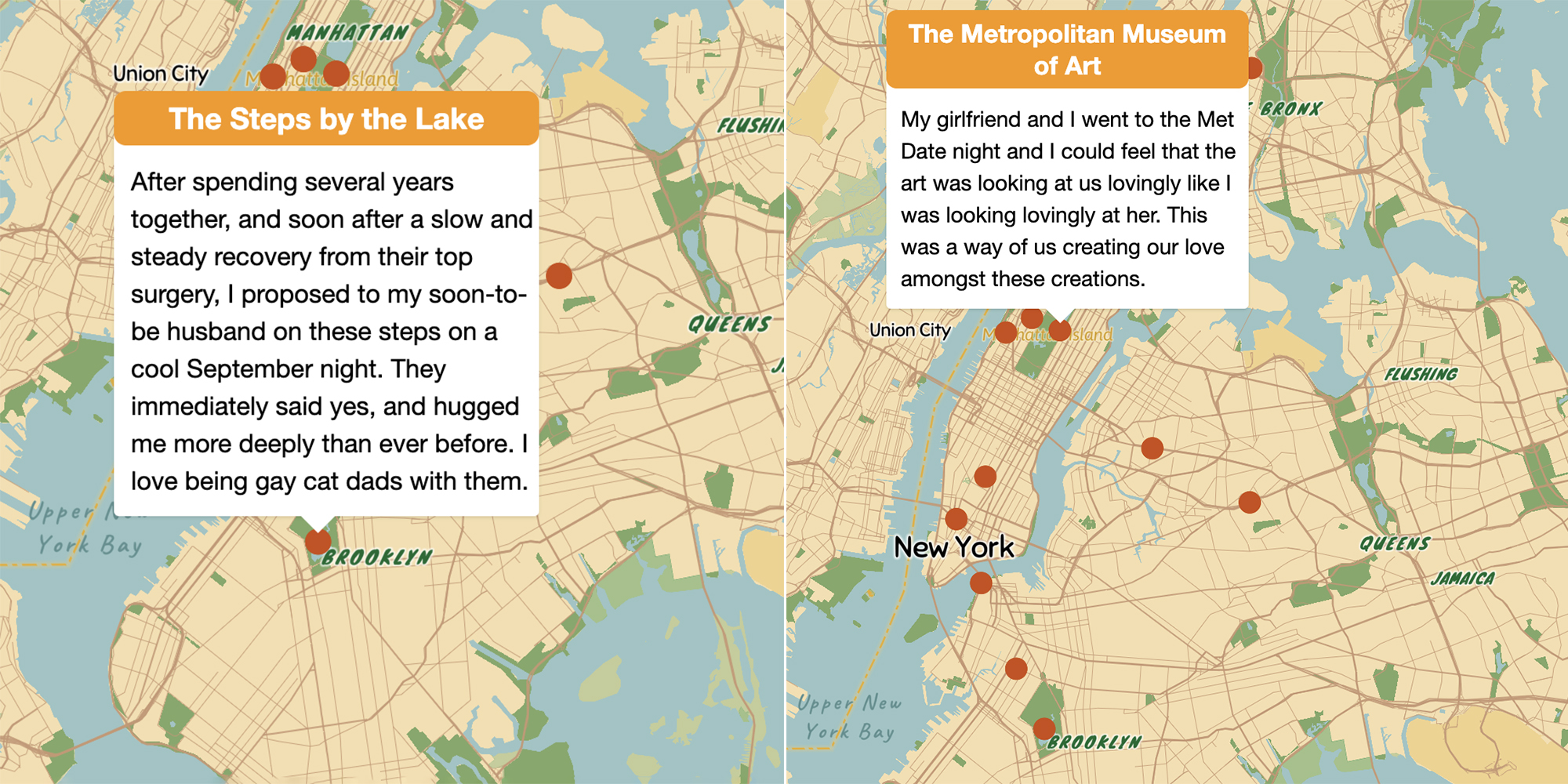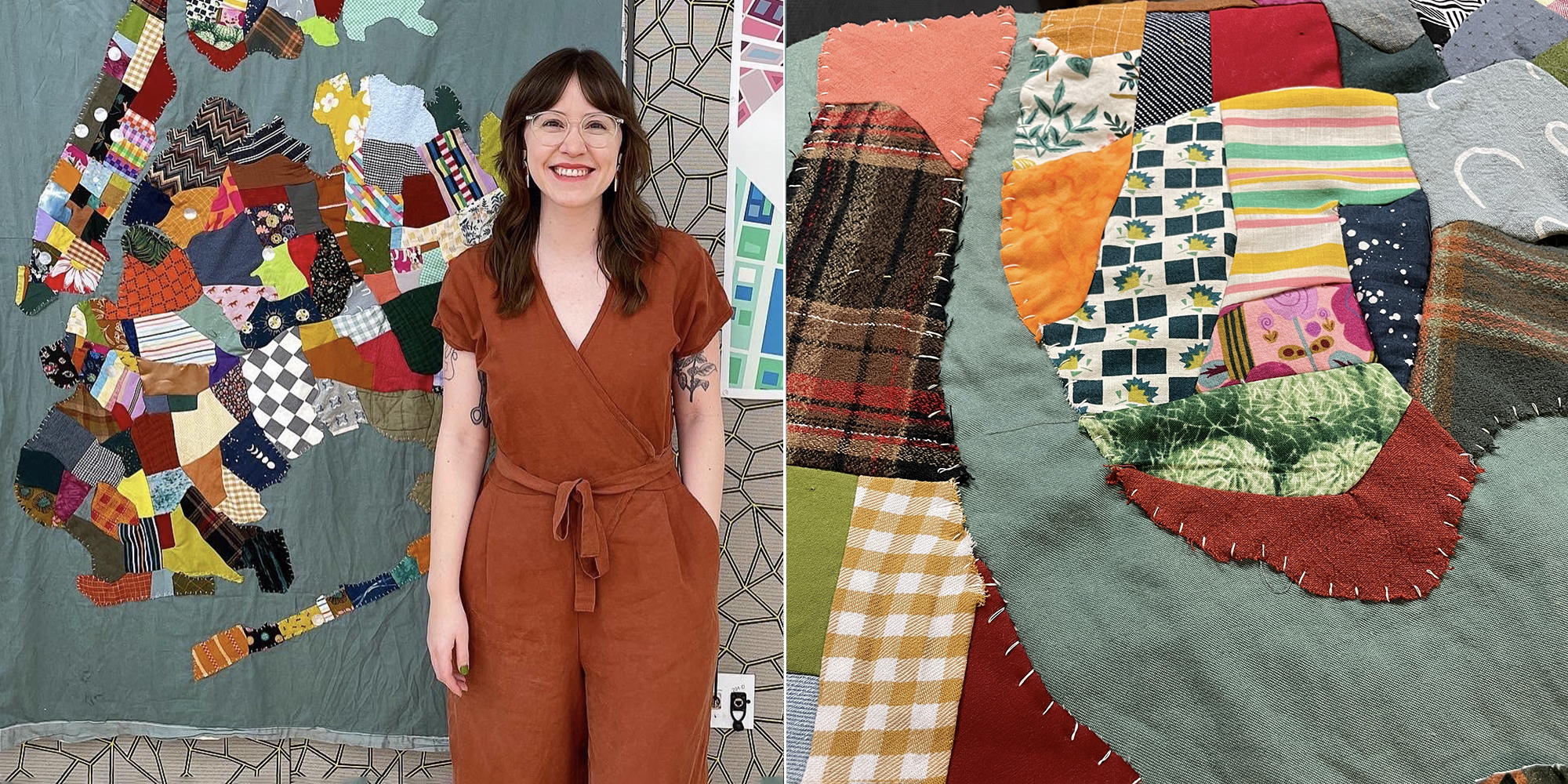Quilts have long been used to tell histories and share intimate worlds, but deciphering their symbols can require an insider’s knowledge. Maps, on the other hand, seek to make physical space or information easily legible.
Gabriella Evergreen, MSLIS ’24, wanted to combine these qualities for her final project in the Digital Humanities studio taught last spring by Chris Alan Sula, associate provost for academic affairs and associate professor in the School of Information. The assignment asked her to use one or more digital methods or tools to address a humanities question.
Evergreen had recently taken Introduction to Spatial Thinking & GIS, taught by John Lauermann, associate professor in the School of Information, where she became versed in the ability of Geographic Information Systems (GIS) to visualize social and environmental issues. She sensed a creative kinship with sewing, which she’s done since childhood.
“I was exploring this idea of data physicalization, which is about taking data and turning it into a tangible object,” Evergreen said. “I was also inspired by queer geography projects that picked different approaches to the question of visualizing queer history. A lot of the works I was inspired by were using textiles and fiber arts for crafted data visualization.”
Over the course of the semester, she developed the Queer Intimacies Located in Thread (QUILT) project, synthesizing her various interests and skills into a quilted map of New York City.
“I imagined it in my head being this patchwork and scrappy thing constructed out of all the fabric that I had in my stash. I wanted to be really intentional about not buying anything new for the project,” she said. “I felt that it could be visually and emotionally interesting to use all of these different scraps of fabric that have associations with other things that I’ve made.”
The quilt took dozens of hours to sew by hand, with each distinct neighborhood getting its own patch. Because of the constraints of the academic calendar and the fact that quilts are rectangular, only four of the five boroughs were included. The various colors, patterns, and shapes in the quilt render the diversity contained within queerness.
But Evergreen wanted the design to include more voices than her own, and her burgeoning understanding of mapping technology presented a way to achieve the digital component of her final project. Sewing Near Field Communication (NFC) microchips into the quilt would allow people viewing it to use their phones to access a digital layer containing queer stories. In this way, the quilt could join a broader effort to recover and uphold queer histories that have been lost to omission or erasure.
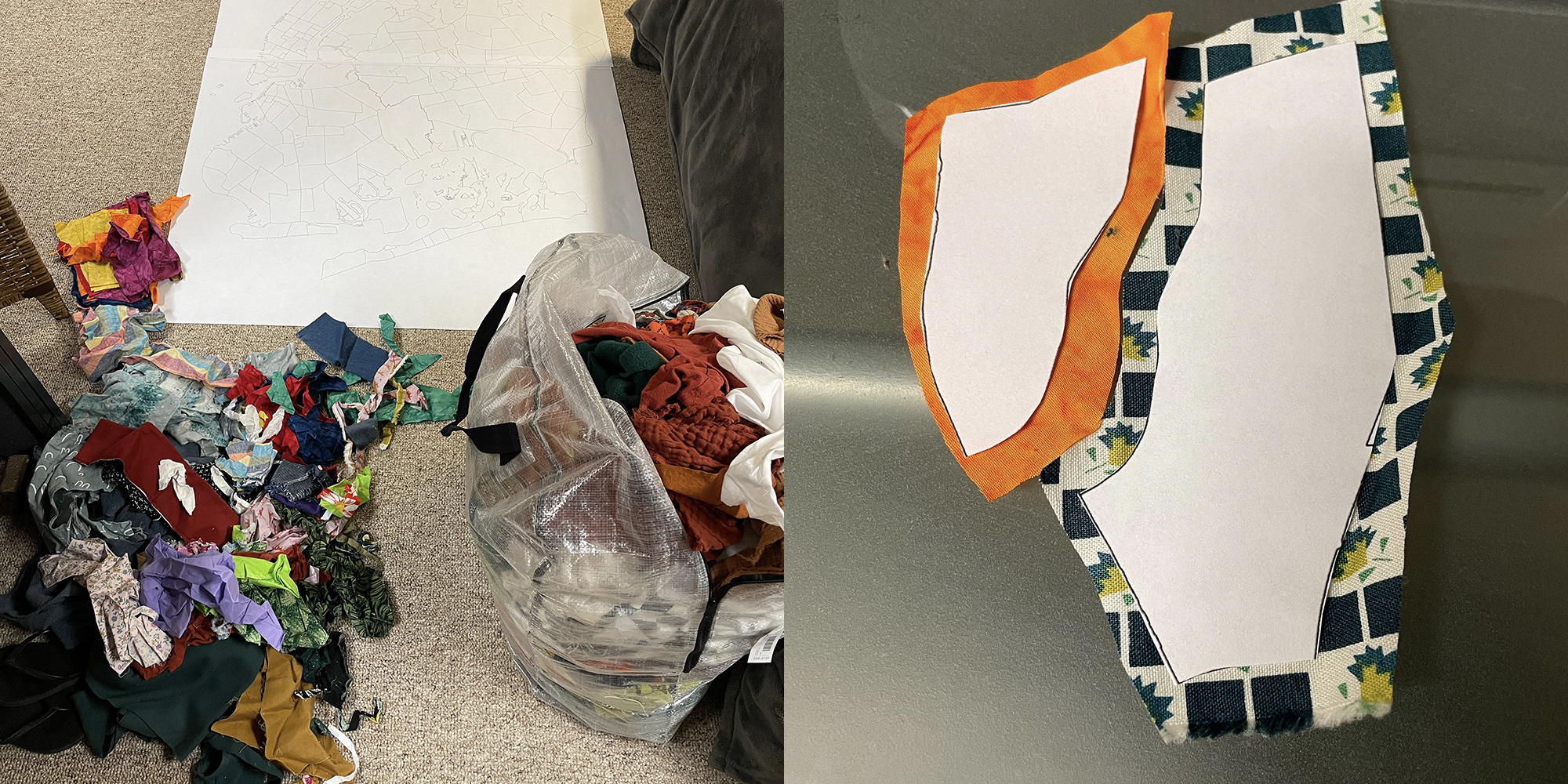
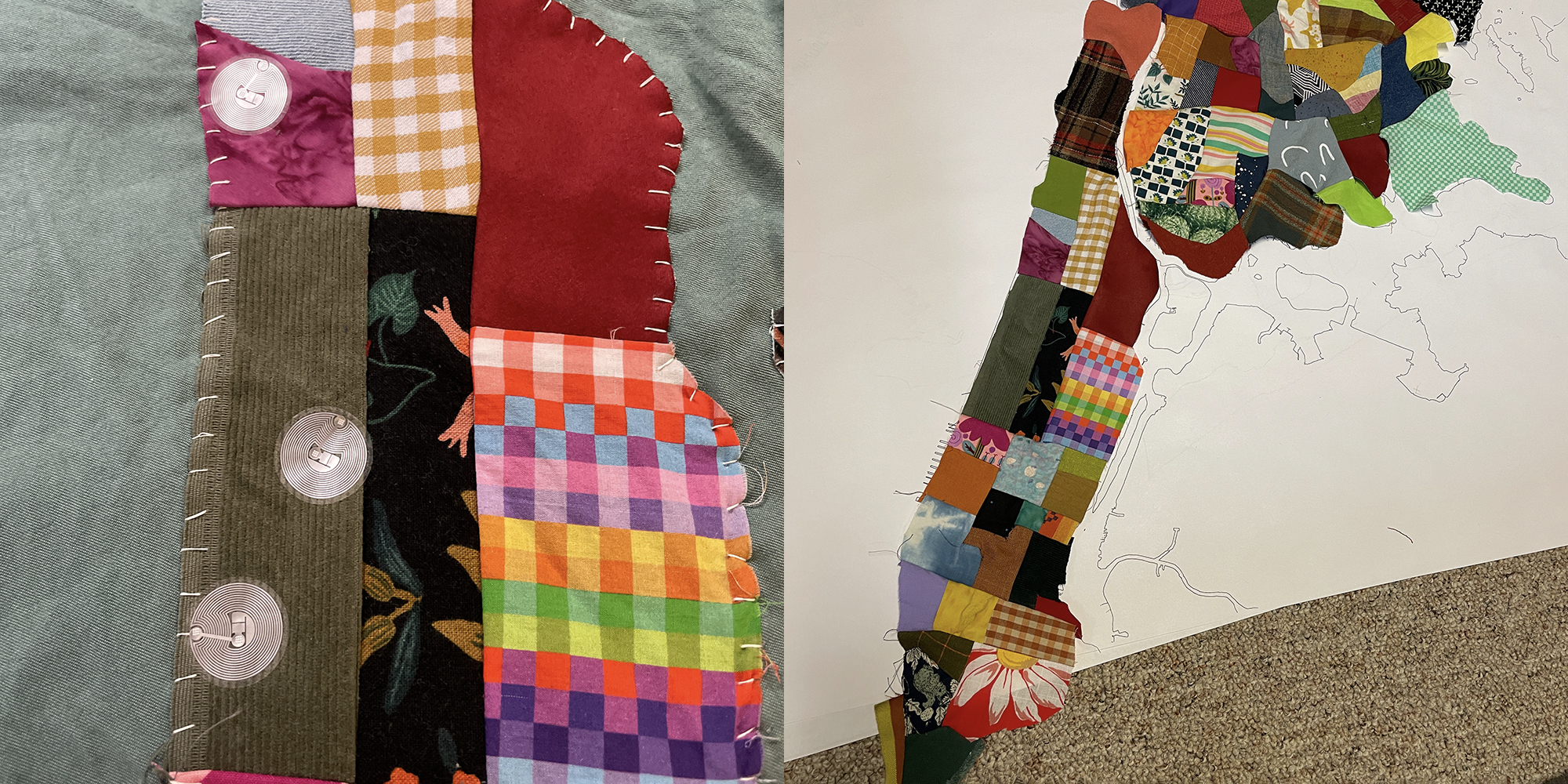
“So much of queer history has been intentionally invisibilized,” Evergreen said. “Associating geographic locations with queer history can be hard because you really have to dig for it and oftentimes it was never recorded.”
Evergreen conducted research into queer histories in New York to form a narrative foundation. She then asked her classmates and sewing community for local queer stories. She organized her research and these stories according to neighborhood and then added them to the associated NFC microchips.
People who interact with the quilt can delve into the unique worlds of specific neighborhoods by scanning the patches. Since the quilt is open-ended and participatory, more stories will be added over time as new communities come into contact with it. The quilt strives to be a safe space for queer community building and calls for intentional and respectful engagement.
“I wanted to create a protective firewall between the viewer and the stories and what that ended up being was a pop-up,” Evergreen said. “When people tap their phone to the patch, they get a pop-up that asks them to acknowledge that queer and trans people are sacred and their love is sacred.”
QUILT made its public debut at Pratt’s InfoShow23, where it won the Best Poster Award. It then traveled to 2023 HASTAC Critical Making & Social Justice conference, which Pratt hosted for the first time in June, bringing together hundreds of artists, academics, designers, community organizers, and technologists to the Institute’s Brooklyn campus to participate in talks, interactive workshops, and performances dedicated to changing the way people teach and learn.
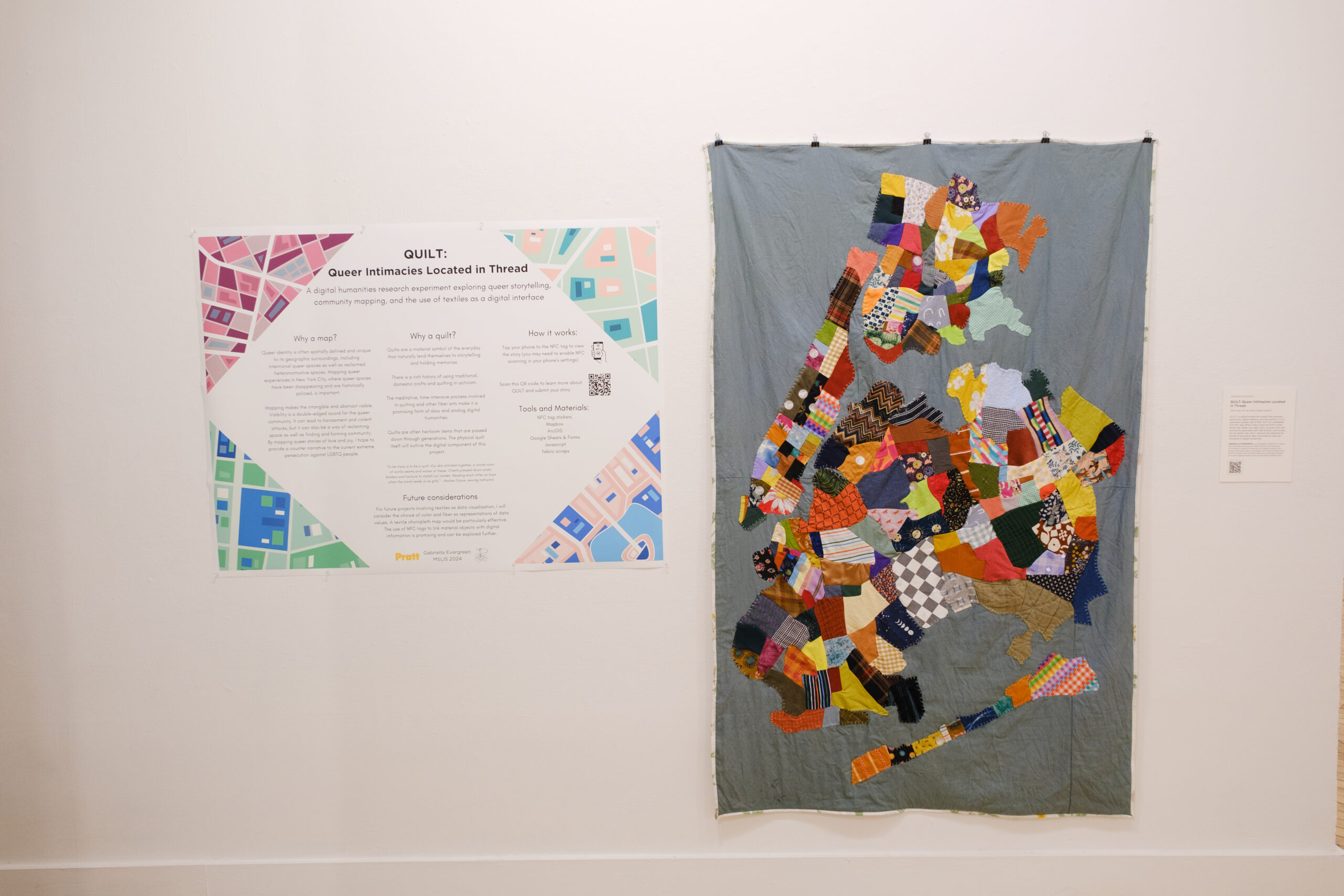
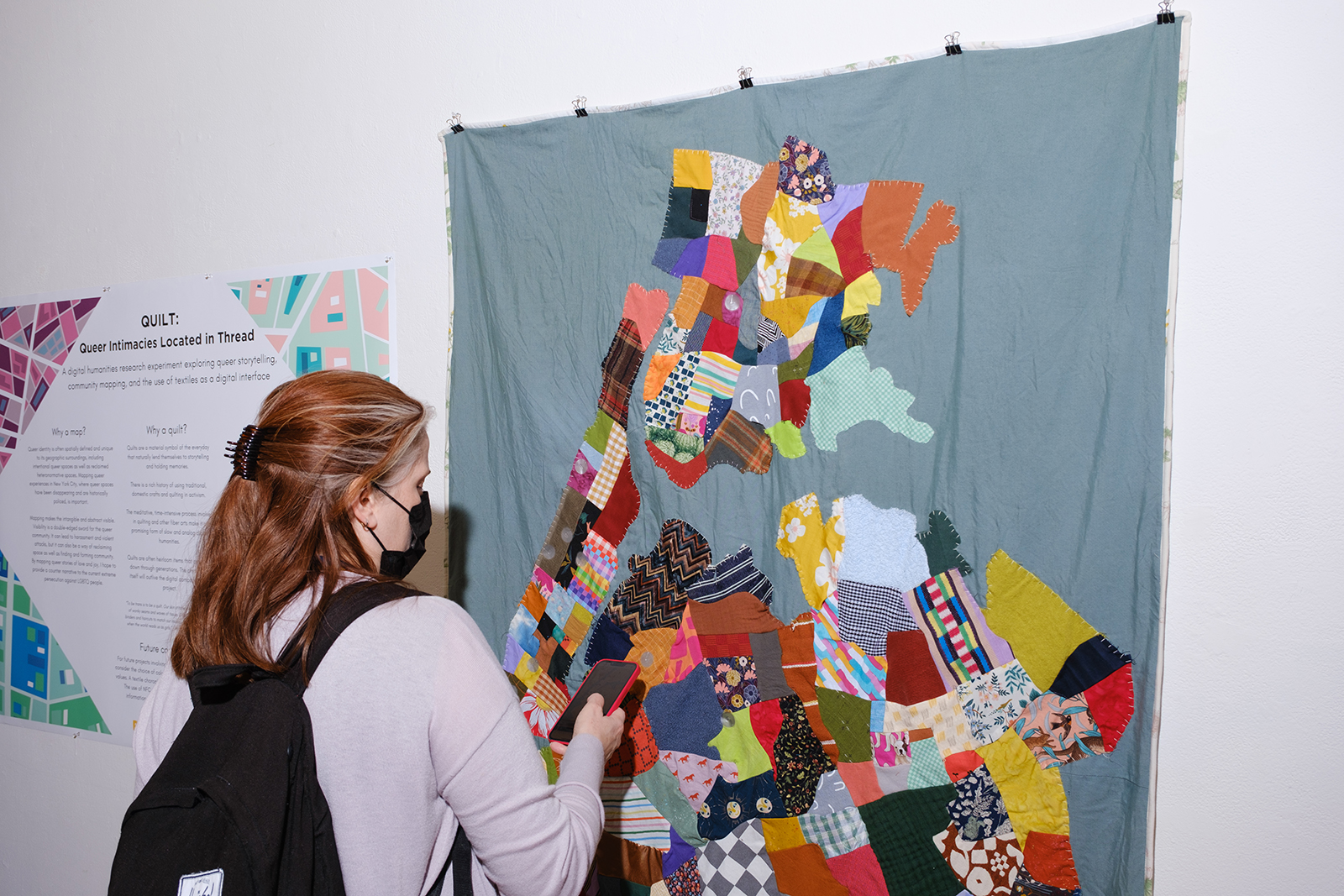
In August, Evergreen spoke about QUILT and the importance of participatory mapping and data physicalization at the Western Association of Map Libraries, after receiving the Libraries’ Diversity and Early Career Librarian Scholarship. In October, she was invited to speak about her work and the history of queer geography at the Barry Lawrence Ruderman Conference on Cartography hosted by the David Rumsey Map Center at Stanford University.
More locally, QUILT was on display for three weeks in the Bushwick community arts space Studio 45, where people submitted stories to be included in the map. She plans to hang the quilt in other venues throughout New York to gather more stories and she hopes to work with LGBTQ+ organizations that can provide a more systematic approach to filling out the queer map of New York City.
“I want to explore what queer identity means specifically to New Yorkers and see what kinds of stories people would want to tell about specific parts of New York City that were formative to them, their queer experience, and moments with the queer community,” Evergreen said.
“I would have never considered mapping and GIS before going to grad school,” she added. “But it just made a lot of sense to me. The visual medium is something that we interact with on a daily basis. It’s such a powerful way of telling stories. Finding out that there’s actually this whole field of queer geography has been kind of mind blowing to me. I’ve definitely been map-pilled.”
